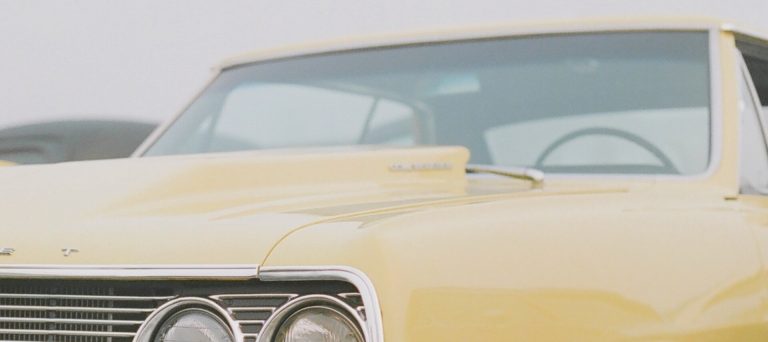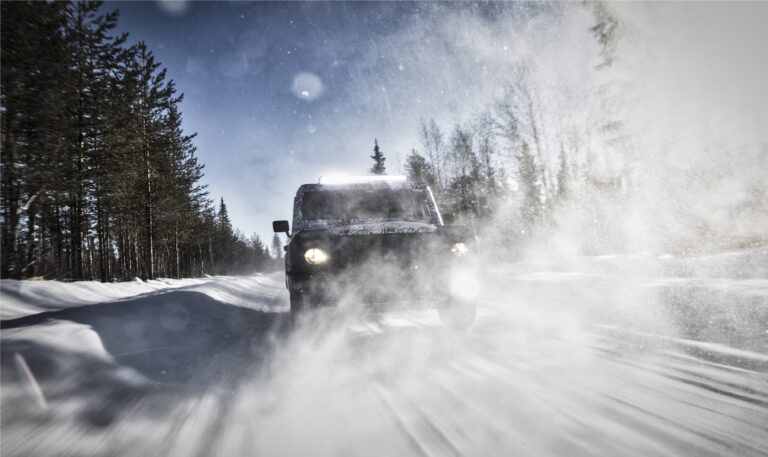Hi Baraza,
I am torn between getting a classic Peugeot 404 and 504 station wagon for daily use.
I have driven modern cars, from SUVs to hatchbacks, but feel that the cars lack character.
When I was growing up, my father had a car that was treated like a family member; that does not happen nowadays. A car is just that — a car!
My research on the net has shown that there is not much difference between modern cars and the 404 and the 504 in regard to fuel consumption if the balancing/mixing is done correctly. Am I right?
Also advise on safety, speed, road handling, spare parts, comfort, etc. Which one would you advise me to get?
Ken
You are right, a sizeable percentage of modern cars lack character. Worse still, they are also quickly losing identity and all look the same.
About the “fuel balancing”, I would not go so far as to declare that there is no difference between 404/504 estates and modern cars.
To start with, what is this “fuel balancing” you refer to? Is it tweaking the carburettor to make the engine run a little bit lean?
If so, then you will also have to deal with loss in power, risk burnt valves and possibly misfiring, which could lead to other kinds of damage, up to and including, but not limited to, top-end (head) damage.
Is the “balancing” mixing petrol with other additives to increase economy?
If so, forget it, there is no such magic elixir that extracts extra mpgs and kpls from a litre of petrol out of the blue (this is a whole other discussion about octane ratings, so yes, such an elixir does exist but things are not exactly black and white here).
Unless you mean large-capacity, high-performance engines of today, then the answer is no, the 404/504s of yore (fitted with carburettors) will not return consumption figures as good as those of modern cars.
If anything, large-capacity, high-performance modern engines have very impressive economy figures when driven “normally”, two good examples being the 2014 Corvette C7 (6.0L V8 engine) and the Mercedes Benz CL65 AMG (6.0L twin-turbo V12 engine), both of which have manufacturer-claimed consumption figures of 30mpg (roughly 12-13 km/l), which is exactly what a Corolla Fielder will do and a 504 station wagon will not.
Most of the other aspects you enquire about are also poor by today’s standards.
Safety is terrible: there are no airbags, no ABS, no electronic driver aids.
The steel/chrome bumpers of both cars and the rounded headlamp fairings of the 404 ensure that the pedestrian had better stay away from the path of an approaching 404.
There are not any energy-absorbing crumple zones, no traction control, no stability control, and no seat belt pretensions… these cars are not safe, period.
Speed is nothing to write home about either: you might remember the days when we had Wepesi, Kukena, Crossroad Travellers and the like, but how long ago was that?
My 2006 Mazda Demio accelerates faster than those cars, and top speed… well, the 504s may have been able to clock 200 or more, but you would not want to do 200 km/h in a 504 with that motion-in-the-ocean suspension setting that was biased more for comfort than outright stability at high speed.
Speaking of suspension, let us deal with the last two traits: handling and comfort.
Handling may have been okay in the 504 saloon (with traces of understeer from the extremely soft suspension), but the lengthy 504 estate was weird when pushed hard.
I know; I tried. Turning hard, this is the order of events as they happen. First up is tremendous body roll. You would think that the car’s door handles will brush the tarmac at any moment.
If the shock absorbers are shot through, this might be as extreme as the tyre treads scraping away the lining of the wheel wells.
Next comes understeer. Feed in lock, feed in more lock, cross your forearms, and keep turning the wheel: all this leads to the car barrelling straight on, towards whatever obstacle might have necessitated the corner that is just about to be your undoing.
Braking only aggravates matters. You have to get your speed right if that understeer is not to end in a massive accident.
You are now midway into the corner and understeering. You will feel the vehicle bend in the middle as you turn, because 1. the 504 estate is very long and 2. structural rigidity is a well-known weak point of Peugeots in general, and 504s in particular.
The folding of the car about its midriff is worrisome; it is even more alarming than the understeer you are still fighting.
If you survive this, then now comes Newton’s third law of motion: for every action, there is an equal and opposite reaction.
Now that you were forcing the frame to warp through hard cornering, at one point the frame will want to straighten itself out.
The timing of this counter-action is most unfortunate, because it occurs at the moment when the vehicle stance is nose-down, back up.
This means that most of the weight is over the front wheels, leaving the rear with little or no grip at all.
Given that you were cornering hard, the normal oversteer typical of long cars is to be expected, but this oversteer is further exacerbated by the elastic rebound of the frame and the complete loss of grip at the back.
You will spin, and spin badly. Counter-steering does not really help, because 1. the steering rack is highly geared, requiring numerous turns from lock to lock and 2. Power steering was not available on all 504 models.
The best thing to do here is wait for the car to stop by itself. If it all goes belly up, you will then have a chance to discover the answer to your last question: 404/504 spares are hard to come by nowadays.
Dear Baraza,
I own a 2003 1.8cc Toyota Allion. I have experienced a strange phenomenon, about three times now.
When I am driving, the engine shuts down, all the lights on the dashboard — including the hazard lights— come on.
However, after a short while it comes on again or starts when I ignite it. What could be the problem?
I service the car even before its due date and this began about a week ago. I have had the car for two years.
Kindly assist since this might happen when I am speeding and the results could be disastrous.
Sam
This sounds exactly like a problem with an anti-theft device: the engine cutout. The symptoms are typical of when the cutout kicks in when running the car after failing to disengage it first.
What I really cannot explain is why it took years for it to become effective.
My guess is that the battery in the plipper (the part of the car key that you press to unlock the car doors and/or deactivate the alarm, if so equipped) could be running low, and that the cutout is part of the security system.
So, pressing the button might unlock the doors but the battery, being weak, might also fail to disengage the engine cutout.
As you drive along with the cutout still active, it gives you a small grace period, a sort of countdown, for you to disengage the cutout before the system assumes you are a thief who does not know where the cutout is and will thus impede your progress before you go too far.
This is just a theory, but it is the one I believe strongly in.
Have an electrician look at the vehicle, with emphasis on the ignition system. Let him trace a cutout.
If none exists, then he can go searching for other problems (which more likely than not, will still be electrical).
Hi Baraza,
I am an avid reader of your column. I am a great fan of muscle cars.
Between the Mitsubishi Galant and the Subaru Impreza WRX sedan, which one is better in terms of performance?
Also, what is the difference between an SUV and an SAV?
Felix Kiprotich
Which Galant are you referring to? I can only assume that it is the VR4, because it is the most similar to the Impreza WRX.
The VR4 is faster. It has a 2.5 litre V6 engine, turbocharged and intercooled to 280hp, and this power is put down through a tiptronic-style semi-automatic gearbox.
The Impreza WRX is good for a “mere” 230hp (the latest model has to around 260-265, but there is no new Galant VR4, so we will compare age-mates here, old Galant vs old Impreza).
This makes the Galant superior. However, if you introduce the STi version of the Impreza WRX, the tables are turned and the STi dominates (it might have the same 280hp in one of its myriad iterations, but the packaging is smaller and lighter, offering better responses and performance).
An SUV is essentially what we used to call 4x4s: tall, high-riding, estate car look-alikes with some degree of off-road ability due to increased ground clearance, and maybe 4WD. Jeeps also fall under this category.
SAV is a class of vehicle that did not exist until BMW discovered that the automotive industry has some murky areas that could be taken advantage of, especially targeting the blissfully ignorant, who just so happened to have a lot of money.
Create an answer to a question nobody asked, imbue it with polarising and highly controversial looks, market it aggressively even before production starts, then sell it under a title that not even the most accomplished motoring journalist can explain convincingly: the Sports Activity Vehicle.
The premise looks good on paper. The top part is a sports car. The bottom part is (supposed to be) an off-roader. In the real world, this thing is a lumpen, high-priced trolley for ferrying privileged children from expansive homes to schools that other privileged children attend; an obese brat-mobile that does nothing convincingly, except seek attention.
It is neither a sports car nor an off-roader. Still, it sells so well that the original, the BMW X6, was later joined by 60 per cent of an X6, called an X4.
It sells so well that even that the most venerated of car makers, Mercedes Benz, has joined in the action with the recently announced GLA “sports activity vehicle”, a dead ringer for the BMW X6, save for the badge on the bonnet.
It makes a motoring writer want to pull his hair out, if he has any.




